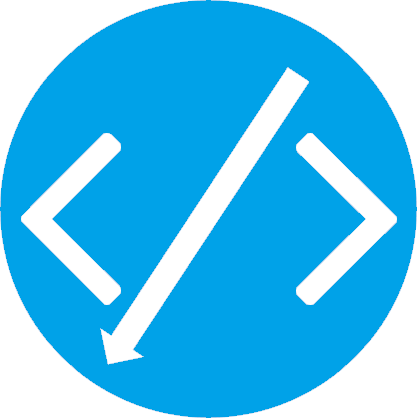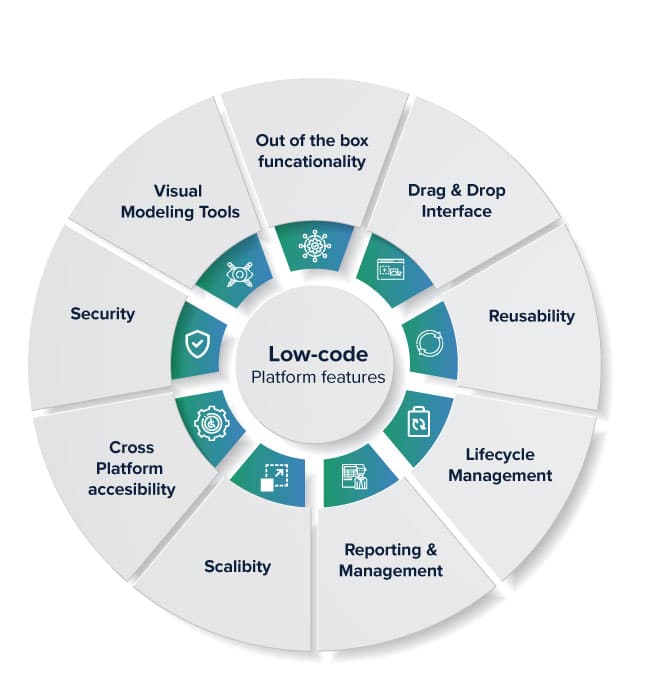Good Tips For Choosing Low-Code Platform Recommendations
Benefits Of Low-Code Application Development In The Sense Of Accessibility To Non-DevelopersLow-code apps improve accessibility for non-developers (often referred to as "citizen-developers") because of a few key factors.
Drag-and-Drop Builders : Low-code platforms have drag-and-drop interfaces, which allow non-developers, who do not requirement to write code to create visually appealing applications. This makes development easier for people with technical backgrounds.
WYSIWYG Editors WYSIWYG Editors "What You See Is What You Get" editors help users create workflows and interfaces that appear as if they were the final products which makes them easier to understand.
Simple Workflow and Logic Design:
Visual Workflow Modeling: Users may develop business processes and apply logic using visual flowcharts and models that are more intuitive than conventional coding techniques.
Pre-built Logical Components: A lot of low-code programs come with pre-built components for logic (e.g. loops, conditions) which can be easily configured. This eliminates the necessity to write complicated programs.
Reusable components and templates:
Library of pre-built templates Numerous low-code platforms have a library of templates for common applications which allow non-developers to start with a solid foundation and modify as they need to.
Reusable Modules and Widgets Utilizing reusable modules and widgets, users can speed up the creation process, while also reducing the need for technical expertise.
Guided development and tutorials:
Step-by-Step guide: Platforms provide tutorials and on-screen help for non-developers building applications.
Interactive Tutorials: Interactive and hands-on tutorials allow users to learn through doing. They can build confidence using the platform.
Integration with Tools Already in Use:
Seamless Integration - Low-code platforms can be easily integrated with existing business tools and systems (e.g. ERP CRM, ERP), allowing even non-developers the ability to develop apps that work to their workflows.
APIs Connectors: APIs are built into apps to facilitate integration. This allows non-developers, with no programming skills, to connect with external services.
Collaboration Features:
Team Collaboration: Features like real-time collaborative workspaces and shared workspaces make it possible for non-developers to effectively collaborate with business analysts, developers and other key stakeholders.
Access control based on role: Role levels can be set for those who are not developers in order to ensure that they are able contribute to development, without jeopardizing security.
Automated testing and debugging:
Low-code platforms have tools for testing and debugging that are built-in. They automatize the procedure, making it much easier for nondevelopers to make sure their apps work.
Platform highlights errors when they happen and suggests solutions. This assists non-developers in troubleshooting.
The primary benefit of developing low-code applications for non-developers is from its ability democratize the development process. With its an intuitive, visually-guided tool and experiences, low-code platforms let business owners actively contribute and manage applications. Follow the recommended click this link on Low-code Platform for application development for more examples including cross platform mobile development, push alerts, no code platforms, paas service, driver jdbc, rad application development, cross platform app dev, rapid app development, application modernization software, microsoft azure sql and more.

Benefits Of Low-Code Application Development In Terms Of Scalability, And Flexible
Low-code software has many advantages when it comes to scalability. They are flexible and able to be adjusted to accommodate new needs. These are the main advantages:
Cloud-based Deployment. A lot of low-code platforms offer a cloud-based deployment that allows the scaling of applications by using cloud infrastructure. It allows businesses to manage increased workloads without having to be concerned about managing servers.
Auto-Scaling Functions: Auto scaling functions can be utilized to automatically adjust resources in response to demand. They guarantee that performance is consistent at peak times.
Flexible Architecture:
Modular Design: Low code platforms promote the modular design of applications, allowing components to be independently designed, tested and scalable. This modularity is a great method to improve flexibility. It also makes it easy to upgrade and expand components of a system without having the entire application affected.
Microservices Architecture: Microservices architecture allows the creation of applications using a loosely coupled set of services. This allows for greater capacity and flexibility.
Custom-designed solutions:
Extensibility Low-code platforms usually permit custom programming and scripting. Developers can enhance the capabilities of their applications beyond what comes out of the box. This allows businesses to satisfy their own unique requirements.
Third-Party Integrations: The capacity to integrate with third-party services and APIs permits companies to integrate additional features and services when needed, enhancing the application's capabilities.
Agile Development Deployment, Agile Development Agile Development:
Continuous Delivery and Deployment Low-Code Platforms support agile methodologies through enabling continuous integration and Continuous Delivery (CI/CD). This allows for rapid deployment of updates and the introduction of new features, allowing apps to develop rapidly in response to customer feedback and changes to the market.
Iterative development: Low-code development is iterative meaning that applications can be adapted and developed in a gradual manner. This reduces the risk of massive changes, while also allowing an controlled growth.
Resource Optimization
Efficiency in Resource Management: Low-code systems help maximize the use of resources by offering tools to monitor and manage the performance of applications. This makes sure that resources are used efficiently and are easily scaled to meet actual needs.
Load-balancing: Features that distribute workloads equally across servers enhance the ability of an application to handle large traffic and ensure a consistent performance.
Global Reach:
Multi-Region Accessibility: Lowcode platforms allow to be used across a variety of regions. Businesses can offer users low-latency access to the world. This is essential, especially when it comes to applications that have global users.
Localization Support The built-in support for language localization allows applications to easily be adapted to different languages and regional needs, enhancing their flexibility in different markets.
Maintenance and updates
Simple Maintenance : Low-code apps are modular and visual. This simplify maintenance tasks. This lets updates and bug fixes be completed quickly and without extensive downtime.
Version Control - Integrated versions control systems will help you manage updates, rollbacks and other changes. They can assure that the changes can be released safely and previous version can be restored when necessary.
Cost Efficiency:
Low-code platforms can cut development costs because they eliminate the need for complex code. They allow developers to expand applications without proportional increase in effort or expense.
Pay-As-You-Go Models A lot of low code platforms have flexible pricing options for their services, including the pay-as-you go model, which aligns prices to usage as well as growth. This allows flexibility in the financial plan.
Low-code development gives businesses many advantages, including scalability, flexibility, and adaptability. This lets them develop robust, flexible and scalable apps. These platforms permit quick adaption to the changing requirements, efficient resource usage, and constant enhancement. This ensures that applications can evolve with the needs of the business. View the recommended I thought about this for Enterprise application development with Low-code Platform for blog advice including app development platform, develop web app, app dev platform, rapid applications, cross platform mobile dev, app modernisation, driver jdbc, developing mobile apps, app modernization, software for app development and more.

Community And Support From The Vendor Are Two Of The Advantages Of Low Code Application Development.
Low-code platform development provides significant advantages, including support from the vendor and community. This is essential for ensuring the success of application implementation, ongoing maintenance and continuous improvement. Here are the major benefits: Support from the vendor
Comprehensive Technical Support:
Support Teams with Dedicated Support: Many low-code platforms have access to dedicated support teams that can assist with technical issues, troubleshooting and provide guidance to ensure that any problems are resolved promptly.
Some vendors provide support 24 hours a day. This is especially helpful to global businesses with various time zones.
Training and onboarding:
Vendors offer structured learning programs, such as webinars tutorials, and certificates to help users become familiarized with the platform.
Personalized Onboarding Many vendors provide individualized services to assist their new clients to use their platform successfully and tailor it specifically to their specific needs.
Regular Updates, Enhancements, and Improvements:
Continuous Improvement: Low-code platforms vendors often release regular upgrades that add new functionality as well as performance improvements and security patches. These updates ensure that their platform is up to date and secure.
Feedback Integration: Vendors typically integrate feedback from users into their development cycles, ensuring that their platform is constantly evolving to meet the ever-changing needs of its users.
Comprehensive Documentation:
Documentation: Detailed documentation is provided for the majority of products. It includes everything from basic to advanced customization. It helps users locate solutions for themselves.
API References: Detailed API documentation aids developers to integrate the low-code platform into other systems and customize their applications efficiently.
Professional and Consulting Services
Expert Consultation : Vendors offer consultation services such as the design of architectures and complicated implementations. They provide this service in order to make sure that their users are able fully benefit from the platform.
Custom Development Services Certain companies offer custom development services to create specific features and integrations which are not included in standard.
Community Support for the Community
Active User Communities
Discussion boards and forums A lot of platforms with low-code have vibrant online community where users can seek help, share solutions and collaborate to find the most effective methods.
User Groups and Meetups Virtual and local user groups and meetups provide opportunities to network, learn and sharing your experiences with other users.
Knowledge Sharing and Collaboration
Community-Contributed Resources: Users often share templates, modules, and extensions that they have developed, which can be reused or adapted by others, accelerating development and innovation.
Crowdsourced Solution Finding: The collective experience and wisdom of a community can be an excellent resource for finding solutions to complex problems.
Learning and Development:
Community-led training: Many communities offer webinars, workshops and training sessions led by knowledgeable users.
Online Tutorials and Courses: Members of the community frequently share and create online tutorials, classes and tutorials for how to perform tasks that enhance learning resources.
Feedback and Influence:
Product Feedback Channels: Community forums typically provide feedback to the manufacturer, which can influence the design of new features and enhancements.
Beta Testing Programs Participants in the Community who are active may get the chance to take part in beta programs. It gives them an early glimpse of the latest features, as well as an opportunity to contribute to the future of the platform.
Recognition and Support
Community Recognition Programs: Several vendors have recognition programs that honor the efforts of community members who are active for example, MVP (Most Valuable Professional) programs.
Peer Support: Community members typically provide peer support, sharing their expertise and providing guidance to users who are not as familiar in a supportive and a supportive atmosphere.
Overall, the combination of robust vendor support and a vibrant and engaged community creates an extensive support system for the development of low-code applications. It ensures that the users have access to the resources as well as the expertise and collaboration opportunities to develop, deploy, and maintain their apps, ultimately enhancing efficiency and creativity.
